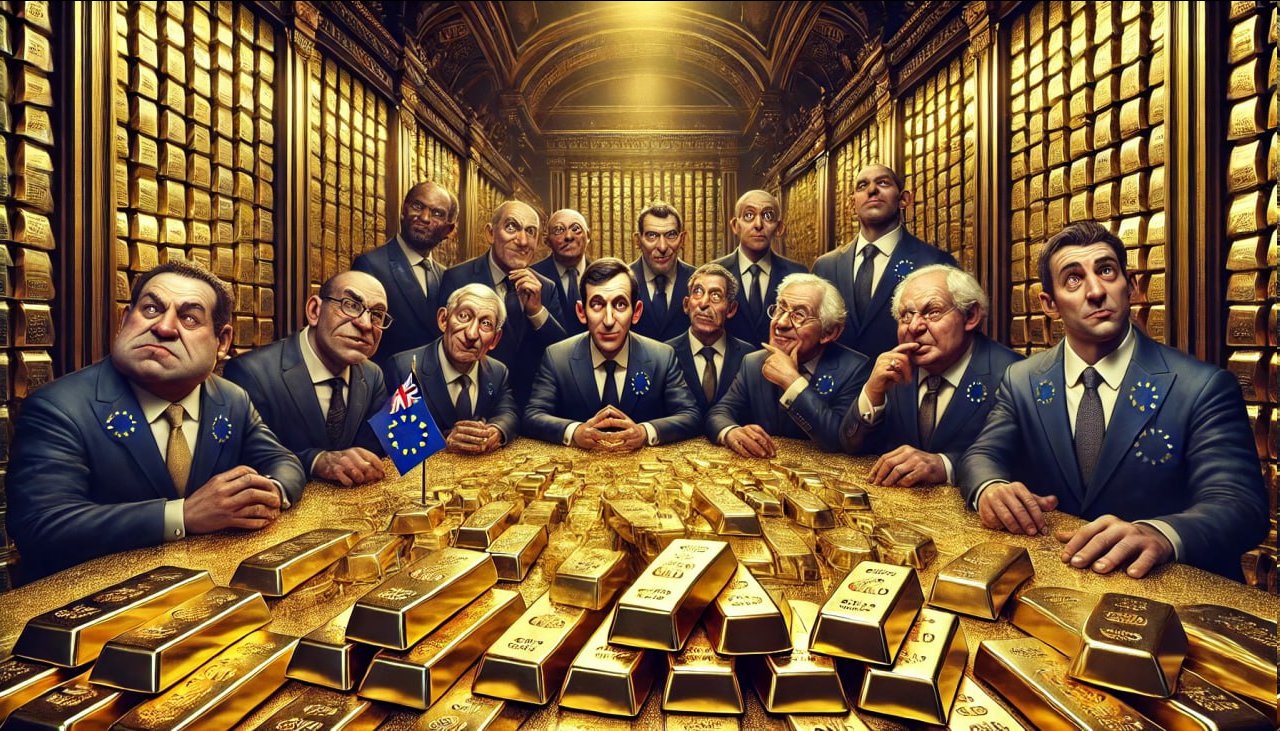The tectonic plates of global finance are shifting. In a stunning turn of events, the United States has revalued its gold reserves, the Federal Reserve has slashed interest rates, and digital assets have emerged as a critical backstop for the U.S. dollar. Meanwhile, the once-heralded BRICS alliance—Brazil, Russia, India, China, and South Africa—is struggling to keep pace, left behind in the wake of America’s financial renaissance and the collapse of the Euro.
America’s Gold Revaluation: A Strategic Masterstroke
In a move that stunned global markets, the U.S. Treasury recalibrated the official value of its gold reserves. Previously recorded at a laughable $42.22 per ounce, gold is now benchmarked closer to its true market value—north of $2,600 per ounce. This revaluation instantly multiplied the book value of U.S. reserves by over 60-fold, quietly fortifying the Fed’s balance sheet and boosting America’s implicit gold-backed credibility.
This gold recalibration isn’t just symbolism—it’s leverage. With the U.S. holding over 8,100 metric tons of gold, the shift amounts to trillions in new off-balance-sheet firepower. This stealth move also signaled to global markets that the United States is preparing for a post-fiat world, where tangible reserves matter more than ever.
The Collapse of the Euro: A BRICS Opportunity Lost
At the same time, the Eurozone faces a grim reality. With inflation surging and fragmentation between core and peripheral countries growing, the euro has buckled. Sovereign debt crises in Italy and France have triggered capital flight into dollar-denominated assets. The European Central Bank (ECB), hamstrung by political infighting, couldn’t act fast enough.
This created a golden opportunity for BRICS to step up with their proposed gold-backed currency. But instead of seizing the moment, the alliance was bogged down by conflicting interests, trade imbalances, and a lack of transparency. The result? BRICS was left behind while America ran ahead.
Digital Assets: The Dollar’s New Armor
What’s most telling about this financial revolution is the U.S. strategy to marry the old and the new—gold and blockchain. As the Federal Reserve cut rates to reflate the economy and manage soaring Treasury yields, digital assets stepped in to absorb volatility. Stablecoins, tokenized Treasury Certificates, and CBDC pilots now serve as buffers, giving investors a tech-driven way to hold U.S. dollar equivalents without relying on fragile banks.
This backstopping of the dollar via digital infrastructure has cemented America’s place at the top of the monetary food chain—even in an era of de-dollarization. Ironically, BRICS nations that championed crypto as a tool to break dollar dominance now find themselves watching the U.S. weaponize it instead.
Conclusion: The Age of Dollar Dominance 2.0
As gold revaluation strengthens the Fed, interest rate cuts revitalize credit markets, and digital assets plug systemic cracks, a new version of dollar hegemony is emerging—stronger, smarter, and decentralized.
While BRICS hoped to dethrone the dollar, they now face the sobering truth: without unity, infrastructure, or trust, they’ve missed the monetary moment of a generation.
Invest Offshore has insight into gold-backed strategies and digital asset integrations that ride this wave. We are actively seeking investors aligned with projects in West Africa’s Copperbelt Region—where hard assets and infrastructure meet opportunity.
Explore sound money strategies with us—before the next revaluation.

Leave a Reply